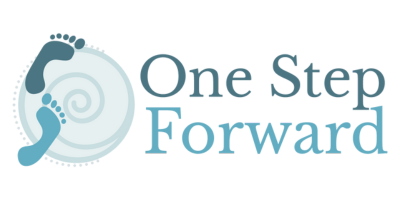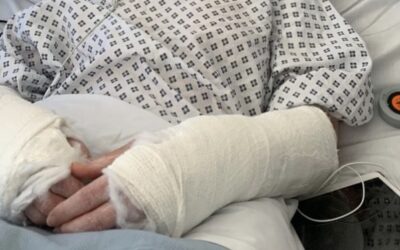There are two aspects to this: the general and the specific. We’re going to start with a specific situation.
My specific situation!
I mentioned in the second part of this series that the nurse who delivered the news of my diagnosis told me that the biggest indicator of a fall in the future is having fallen in the past.
In other words, that my own risk of falling and fracturing a bone was significantly higher now that I had fallen once.
Even in my state of shock and distress, I couldn’t let her get away with that. My 20 years as an analyst, during which data, forecasts and statistics were my bread and butter, meant that I immediately understood exactly what she meant – and what these figures did not mean.
Statistically, I had no doubt that she was correct. In fact I didn’t have to look far for the evidence myself. Less than a year before my own accident, my mother fell one evening in the garden (she was shutting the ducks up… not a surprise to anyone who knows her!).
At 80, her circumstances were very different from my own. She already had an artificial hip so despite falling hard, her hip literally could not break. But something had to give, so she smashed her pelvis.
Some six weeks later, recovering remarkably well from such a major trauma, she fell again – and this time she broke her femur.
I will be the first to acknowledge that in this situation it was 100% the case that her second fall was a direct result of the first fall. Her experience supported and reinforced the statistics that were subsequently quoted to me.
And since statistics are inherently general, not specific, the nurse was also correct in telling me that having fallen once increased the statistical likelihood of someone falling and injuring themselves a second time.
However, when we look at the specifics – by which I mean my particular circumstances – it’s not so clear cut.
Yes, I was a woman in my 50s. I had broken a bone (in fact, two) as a result of a fall at home, “from standing”, which technically made it a “low impact fracture”. Statistically speaking, my injury was in the same category as my mothers.
But, as I pointed out to the nurse, actually there was no comparison. I had not fallen because I lost my balance. I had not tripped because I didn’t pick my feet up properly. My legs didn’t give way because of chronic pain…
I had tripped over my own trousers. Not my finest moment, admittedly, but also something that was easily avoided in the future by not wearing them again!
Moreover although I did technically “fall from standing“, I was moving at speed when this happened, adding momentum to my fall.
I accept that my lower-than-ideal-bone density significantly contributed to the severity of my injury. After all I can’t argue with the statistics about how few people break both wrists at once!
But, as I said to the nurse, I do not believe that my personal risk of falling today is any higher than it was on 23 April 2022 (the day before my accident).
Unless…
There is one factor that might change this. If I were to lose my confidence in my ability to remain upright, if I were to become afraid of falling, then the likelihood of my falling would increase significantly.
And ironically, this fear is exactly what the nurse’s words could have instilled in me if I hadn’t had the understanding to recognise the power of her suggestion when she made it.(See my Part 2 of the this series for more on this.)
Now let’s move on to the general point about statistics. This is a “health warning” that applies to reading any kind of statistics.
It’s about how the numbers are reported.
I was a business analyst for many years. One of the things that was drummed into me over and over – and which I in turn drummed into new members of my own team – was the difference between a percentage change and a percentage point change.
Another way of putting it is the difference between relative change and absolute change.
Why does it matter?
When hearing about a specific treatment, whether it’s drugs, supplements, diet, exercise regime or anything else, we are frequently told about the results of clinical trials.
Let’s assume that you read that a particular approach was shown to have achieved a 50% reduction in osteoporotic fractures. That sounds amazing right? Definitely something you should take seriously.
Well, maybe. But first you need a bit more information.
50% change is the percentage change – the relative change. But what was the absolute change (the percentage point change)?
Let’s say 200 people participated in this trial, half of whom received the treatment and half a placebo (the control group).
(To be clear, this is a completely fictional example to make the numbers easy!)
In the control group, 40 out of 100 people sustained a fracture over the time assessed.
In the 100 people receiving the treatment just 20 did.
That’s a fall of 50% in the fracture rate (relative change). It’s also a fall of 20 percentage points (absolute change). Impressive results – you’d probably want to find out more.
But what if just 4 people in the control group sustained a fracture, compared with 2 in the trial group?
That’s still a relative change of 50% – from 4 to 2. But it’s an absolute change of just 2 percentage points.
It may still be something that you want to look into. After all any improvement is worth exploring, right?
But what if this treatment has the potential for unwanted side-effects?
Then you might want to weigh up the advantages and the disadvantages before starting treatment.
After all, you might feel differently about the level of side effects you’re prepared to accept in return for reducing your chance of a fracture, statistically speaking, from 40% to 20% or from 4% to 2%.
The thing is it sounds much more impressive to talk about a 50% decrease in fracture risk than to talk about a two percentage point decrease. And the impressive numbers are the ones that make for big splashy headlines.
When you are looking into any kind of treatment be aware of what you are actually being told, and what you are not being told.
First find your facts, then make your decision.



